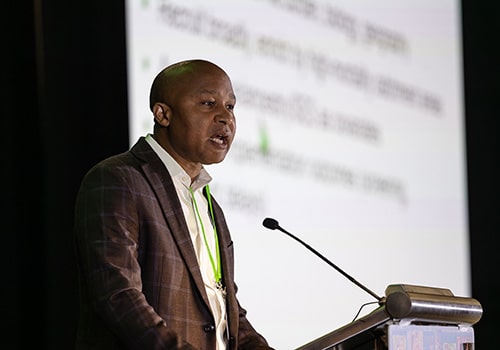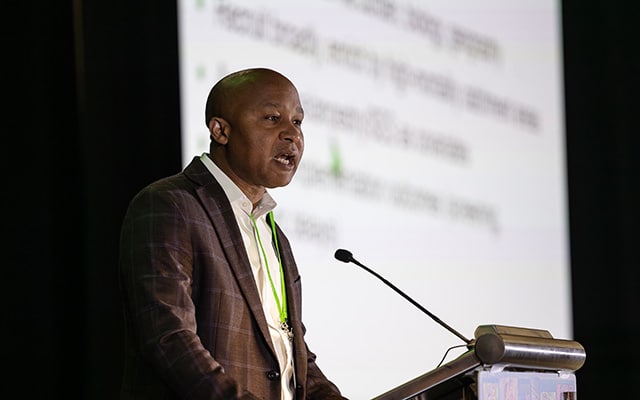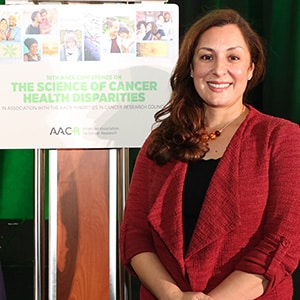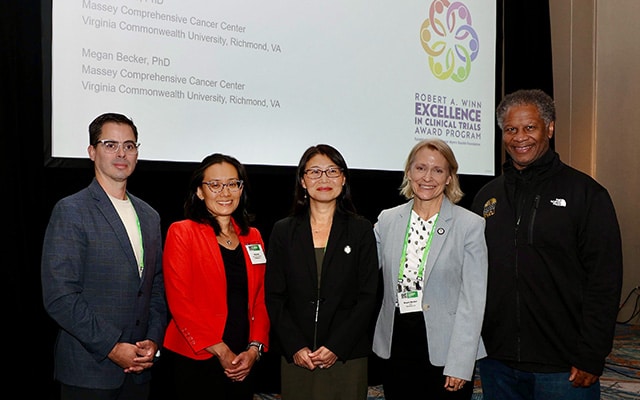
In 2007, the American Association for Cancer Research (AACR) launched a conference focused on advancing the understanding of cancer health disparities—bringing together scientists, health care professionals, and patient advocates to discuss research into how disparities impact public health and to explore potential solutions.
“When the cancer research field was still contemplating whether disparities research should be considered a science, the AACR was out in front shining a light on the importance of this research and what scientists were doing in this area,” said Robert A. Winn, MD, FAACR, director and Lipman Chair in Oncology at VCU Massey Comprehensive Cancer Center. “And over the past 18 years, this field of research—and the cadre of scientists studying it—has grown substantially.”
Since 2007, the AACR Conference on the Science of Cancer Health Disparities has covered a wide range of topics including disparities related to specific cancer types such as breast cancer and prostate cancer; factors that contribute to cancer health disparities in the LGBTQ+ and indigenous communities; the economic impact of disparities; solutions to diversify clinical trials; the use of public databases to close gaps in research; intervention programs addressing issues like food insecurity; the importance of culturally tailored education campaigns; how structural racism impacts tumor biology; and much more.
But the history of health disparities research stretches back a lot further than the early 2000s. During the opening keynote of this year’s conference, held September 18-21, Winn spoke about the enduring history of this field from the 1890s when Isabel Eaton and W.E.B. Du Bois, PhD, studied the conditions of Black people living in Philadelphia to the 1990s when Harold Freeman, MD, worked to reduce high mortality rates among Black women with breast cancer in Harlem. And between 1890 and 1990, Winn shared multiple examples of researchers who had to persevere through adversity to conduct their work. Just one of those examples: Percy Julian, PhD, who as a Black researcher during a time of widespread segregation was able to discover a way to make pain medications more affordable and widely available.
Winn challenged attendees to follow in the tradition of these great scientists and to continue their important work in this field. In fact, he even gave them an assignment: “What we have to do as scientists and the gift we have to give to the world is the best science that we can do.”
Throughout this year’s meeting, speakers shared similar sentiments about the importance of continuing to research the science of cancer health disparities.
Examining NIH’s New Strategy
With the evolving landscape for disparities research and the changes underway at the National Institutes of Health (NIH), Clayton C. Yates, MS, PhD, closely examined the NIH’s new unified strategy and ensured attendees that what he found was encouraging.
“Solution-oriented health disparities research is still a tenant of the NIH,” explained Yates, who is the director for translational health disparities and global health equity research at Johns Hopkins University School of Medicine.
For example, he pointed out that while this strategy mentions a shift away from identifying disparities, it still calls for research into intervention programs for poor health outcomes. Additionally, he said the NIH is not completely ignoring race, socioeconomic status, and environmental exposures, as the strategy just indicates those terms must be clearly defined. He also called attention to the increased emphasis on real-world data, AI, and nutrition throughout the document, and suggested researchers may want to incorporate these areas into their grant applications if they aren’t already.

Nastaran Zahir, PhD, the acting director of the Center for Cancer Training at the National Cancer Institute (NCI), noted that the NIH continues to support cancer health disparities research that aligns with this new strategy, and said the NCI is working with early-career researchers whose career development grants have been discontinued, including helping them to apply for other funding opportunities within the Center for Cancer Training, and suggested using the matchmaker tool on NIH RePORTER to identify a NIH program director who can help those researchers navigate the process.
“Even in a challenging budget climate, I encourage you to continue to think about applying to awards at the NIH and NCI. I also encourage you to think about applying to other places in parallel,” Zahir said. “Continue to follow your passions and find the means in which they can be supported.”
Alternate Funding Sources for Health Disparities Research
To help researchers identify alternate funding sources, one session at the conference invited representatives from various foundations and the pharmaceutical industry.

For example, Leah B. Kline, PhD, deputy director in the Research and Grants Administration Department at the AACR, highlighted the Beginning Investigator Grants for Catalytic Research, Maximizing Opportunity for New Advancements in Research in Cancer, and Cancer Disparities Research Fellowships as three opportunities that are specifically focused on addressing global cancer disparities. “We believe that we can reduce cancer disparities one grantee at a time,” she said.
Joanne W. Elena, PhD, MPH, scientific director at the American Cancer Society, mentioned their Clinical and Population Sciences Research Program, which places a special emphasis on research grants investigating prevention, detection, treatments, and cancer survival in understudied groups.
Catherine L. Higgins, PhD, the senior vice president of science programs at Stand Up To Cancer, spoke about the organization’s grant opportunities, including some of their areas of focus moving forward. For instance, any grant application for a clinical trial must now take into consideration the specific communities impacted by the cancer type and how to ensure the trial can be conducted in those communities. She also said that they are placing a priority on research into the use of AI for the early detection of cancer. The AACR is the scientific partner of Stand Up To Cancer.
While many researchers may already be familiar with industry-sponsored clinical trials, Sabrina L. Meyers, PharmD, the senior director, head of community oncology strategy at Gilead Sciences, shared some other research funding opportunities from industry. For example, at Gilead they have a health equity grant specifically focused on research related to Black people with triple-negative breast cancer as well as an oncology grant that is funding research addressing inequities in cancer. She also made it clear that Gilead is far from the only pharmaceutical company with grants to support health equity research, and encouraged attendees to look at opportunities at other companies as well.
Why This Research Matters
Winn said that a common theme throughout his work—and the work of many others researching cancer health disparities—is the importance of ensuring science is reaching the communities that can benefit from it. That was among the reasons he started the Robert A. Winn Excellence in Clinical Trials Award Program in late 2020. This two-year program, which includes an intensive workshop held in partnership with the AACR, is designed to train and support early-career investigators on ways to expand access to clinical trials—and it’s working.
In 63% of the clinical trials run by investigators in the program, more than a quarter of the trial participants are from traditionally underrepresented populations. Meanwhile, only 28% of industry-led trials are enrolling that many participants from groups historically left out of clinical trials, according to early results from the program presented during the conference.

Carolyn Fang, PhD, who presented a different study at the meeting, is also working to bring science to underrepresented communities.
“Rates of cervical cancer screening are lower among Asian American women compared with other populations, and our prior studies identified psychosocial and logistical issues as top reasons,” said Fang, the associate director for population science and professor in the cancer prevention and control program at Fox Chase Cancer Center–Temple Health, in a press release.
Fang and her colleagues enrolled 1,140 Asian American women—47% of whom never had a Pap smear test—in an educational workshop on cervical cancer that included referrals to sites with free or affordable screening options. Additionally, about half of the women were provided with HPV self-sampling kits. After six months, 87% of those who received the self-collection kit returned a completed sample, while only 30% of those referred to a clinic received a Pap smear.
“Our findings indicate that a targeted, culturally sensitive, convenient, and private option really appealed to women, and may help us get closer to the ultimate goal of eliminating cervical cancer,” Fang said.
These two examples help to highlight the impact of research into cancer disparities and measures researchers are taking to mitigate them, and why Winn implored researchers to follow through on his assignment:
“Do your science for the good of all our communities and the globe.”
Additional studies on cancer health disparities can be found in the AACR’s 10 peer-reviewed journals. View a collection of perspectives, reviews, and research articles from all of the journals.
Source link

